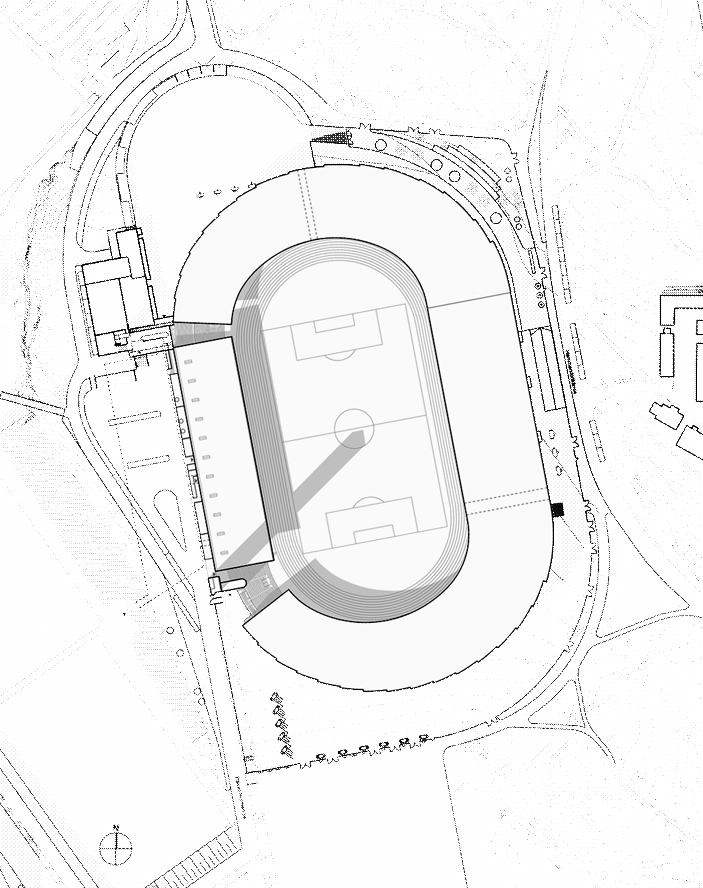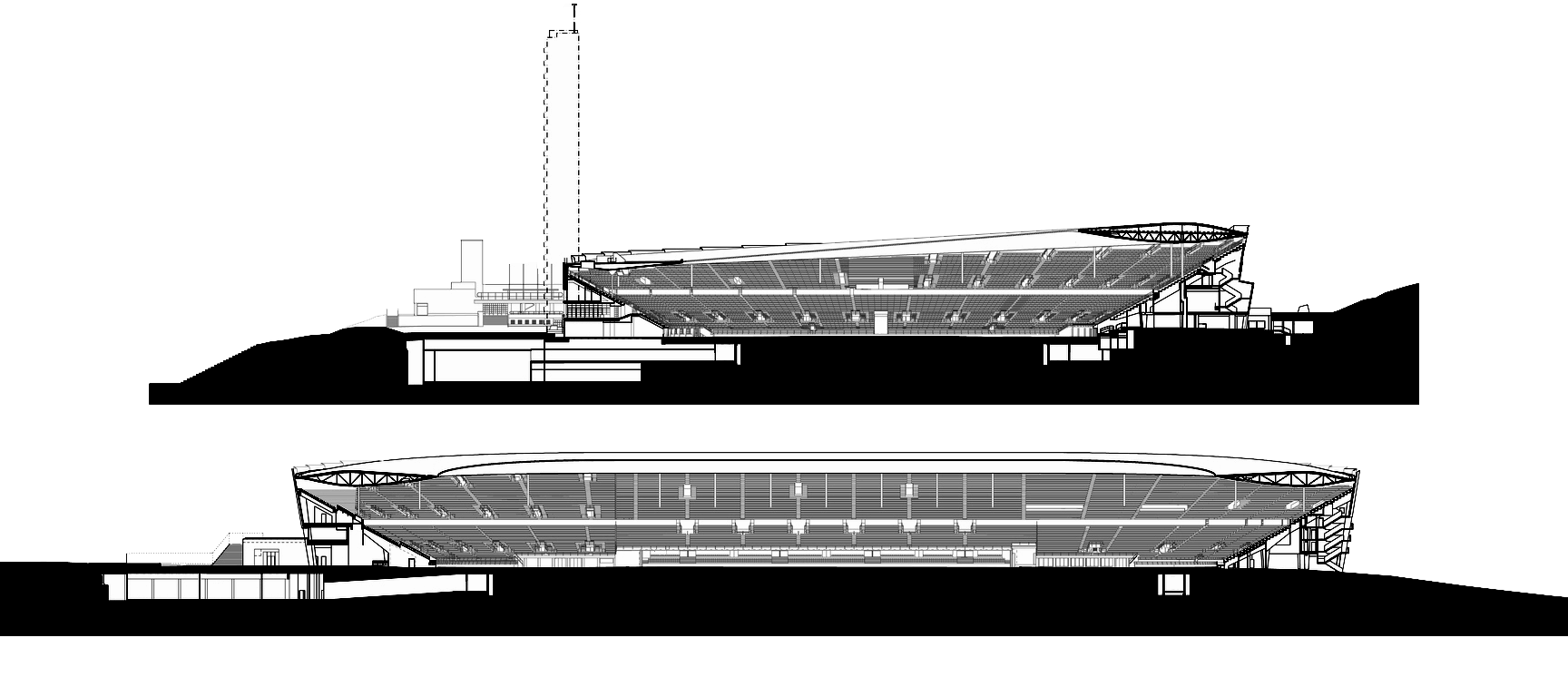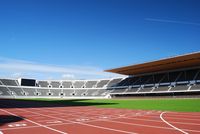Olympiastadion Helsinki
| Capacity | 36 200 |
|---|---|
| Country | Finland |
| City | Helsinki |
| Clubs | - |
| Floodlights | 1,250 lux |
| Inauguration | 12.06.1938 |
| Construction | 12.02.1934 - 06.1938 |
| Renovations | 1939, 1947-1952, 1953-1956, 1961, 1971, 1991-1994, 1997-1998, 2004-2005, 2011, 2016-2020 |
| Record attendance | 46,127 (Finland - Holland, 31.05.1989) |
| Cost | € 337 million |
| Design | Yrjö Lindegren, Toivo Jäntti (1934), Arkkitehtitoimisto K2S (2013) |
| Address | Paavo Nurmen tie 1, Töölö, Helsinki |
Advertisement
Olympiastadion – stadium description
The Stadion foundation was established already in 1927, planning the development of a true multi-use venue for Helsinki. Yrjö Lindegren and Toivo Jäntti won the design competition foundation carried out and construction began in 1934, ending short before the outbreak of WWII.
As Helsinki had aspirations to hold Olympics, their new stadium was soon expanded and when the city won the 1952 tournament with their bid, stands were temporarily expanded to 70,000 capacity. Soon after the event another changes came, resulting in the stadium’s current external appearance, with large wooden panels and still simple, functionalistic form.
Apart from Finland national team’s games, HJK held their largest fixtures here, like the Manchester United encounter in 1965. But this was never a stadium dedicated to football, holding various winter sport events already from 1940s, with hockey, bandy and speed skating among others. To date its pitch is converted into an ice rink during wintertime.
Also a large variety of summer sporting tournaments took place, with both World and European Championships in Athletics (1983, 2005 and 1971, 1994, 2012 - respectively). In 1970 The Rolling Stones played the first concert, starting another new chapter.
One element of the stadium stands out particularly, and literally – the 72-meter tower that gives a wonderful view of Helsinki and is an attraction itself. In 1943 Finnish sports museum was opened under the stands and in 1961 Olympiastadion’s famous hostel.
 After various changes the stadium still enjoys its historical appearance on the outside and indications say this will continue. Even addition of a roof opposite the main stand in 2005 didn’t change this.
After various changes the stadium still enjoys its historical appearance on the outside and indications say this will continue. Even addition of a roof opposite the main stand in 2005 didn’t change this.
Between 2016 and 2020 the stadium went through its biggest intervention in history. Instead of demolishing the monumental structure, authorities opted to preserve the original architecture and improve it, based on the 1938 aesthetics. Since it was deemed inappropriate to interfere with its facades, additional floor spaces and uses were created beneath ground level, beside the stadium.
The most significant changes include extension of the roof to cover nearly all spectators, renovation of all existing facilities and replacement of the famous wooden benches with individual seats (still wooden, though!). All timber was sourced within Finland and despite the changes capacity remains unchanged.
The structural steel used for extended roof weighs some 3,000 tons, with the longest single beam going 36 metres into the stadium. The roof rests on the 80 historical columns, although reinforced with additional concrete to bear the weight.

The amenities were changed almost entirely. Aside from renovation of the existing facilities, a total of 20,000 m2 was added within the stadium complex. Perhaps most surprising addition is a second running track around the field hidden beneath the open-air one. Internal logistics and crowd flow were also upgraded, with new vomitories ensuring easy access and egress. Materials used are entirely consistent with the historical parts of the stadium, with white concrete, timber and glass dominating the stadium.
Renewed entirely, the building came back to life on August 22, 2020. The project received quite some praise, taking home the Wood Prize 2020, RIL Award 2020 and Architecture Finland 2020. On the other hand, quite some controversy was also associated with it, as the initial budget of €197 million grew massively, ending at €337 million.
Advertisement
Pictures
-

12.08.2020 © Joneikifi (cc: by-sa) 
12.08.2020 © Joneikifi (cc: by-sa) 
2020 © Wellu Hämäläinen, K2S Architects 
2020 © Wellu Hämäläinen, K2S Architects 
11.09.2020 © Aleksi Tiira (cc: by-sa) 
2020 © Tuomas Uusheimo, K2S Architects 
2020 © Tuomas Uusheimo, K2S Architects 
10.09.2020 © Eteil (cc: by-sa) 
10.09.2020 © Eteil (cc: by-sa) 
21.06.2020 © Eteil (cc: by-sa) 
2020 © Tuomas Uusheimo, K2S Architects 
2020 © Wellu Hämäläinen, K2S Architects 
2020 © Tuomas Uusheimo, K2S Architects 
2020 © Tuomas Uusheimo, K2S Architects 
27.01.2010 © Hostelling Finland (cc: by-sa) 
07.2012 © Andrea Basso (cc: by-nc-sa) 
17.09.2010 © Groundhopping Merseburg 
17.09.2010 © Groundhopping Merseburg 
17.09.2010 © Groundhopping Merseburg 
27.04.2007 © Antti T. Nissinen (cc: by) 
20.05.2012 © Kwong Yee Cheng (cc: by-nc-sa) 
20.05.2012 © Kwong Yee Cheng (cc: by-nc-sa) 
28.04.2012 © vestman (cc: by) 
30.07.2012 © location: unknown (cc: by-nc-sa) 
27.05.2012 © Marc Palaus (cc: by-nc-sa) 
28.04.2012 © vestman (cc: by) 
28.04.2012 © vestman (cc: by) 
28.04.2012 © vestman (cc: by) 
17.09.2011 © fareastsuite (cc: by-nc) 
02.06.2007 © Rodrigo Quiñones (cc: by-nc-nd) 
10.09.2008 © Steffen Hüther 
10.09.2008 © Steffen Hüther
2005-2015:
Related news
2024
2022
2021
2020
-

Helsinki: Stadium reopening, the Finnish way
After lengthy reconstruction the Olympiastadion in Helsinki is about to reopen. And Finns are doing it their way: for weeks residents will be able to visit nearly all places at the stadium, even use the Olympic facilities for exercise!
-

Amsterdam: Budapest to host 2022 Europa League final
Personally we'd prefer it getting a Champions League final first but that's also good news for Budapest. The new national stadium will host Europe's second major final in May of 2022.
2017
-

Finland: Skanska to rebuild Olympiastadion
Skanska have won their highest ever contract in Finland. The company will renovate the Olympic Stadium in Helsinki and works are expected to begin shortly.
-

Helsinki: More costly Olympic renovation
Finland decided not to build a new national stadium, instead renovating the historic one. This project has just become more controversial as price increased by 25% before work even started for good.
2015
-

Helsinki: Last days of the old Olympiastadion
It’s the last two days to visit the national stadium of Finland and possibly find a souvenir. Just before Christmas the building will be closed for three long years of redevelopment.
-

Helsinki: Fans dismantled legendary Olympiastadion benches
In just a week some 10,000 people came to the Helsinki Olympiastadion for souvenirs. It’s the famous wooden benches that have to go before stadium renovation.
2014
2013
-

New design: Olympiastadion Helsinki
It’s been the showcase stadium for Finnish sports for 75 years and all indications say it will remain that way for years to come. Plans to redevelop it are very modest and respectful to the historical architecture created in 1938.
-

Euro 2020: All you need to know about interested countries
Or, in other words, all we were able to find digging a lot deeper than just the brief info released by UEFA. It took us a while, but this is – according to our knowledge – the most comprehensive analysis of Euro 2020 potential bids.

 StadiumDB
StadiumDB


